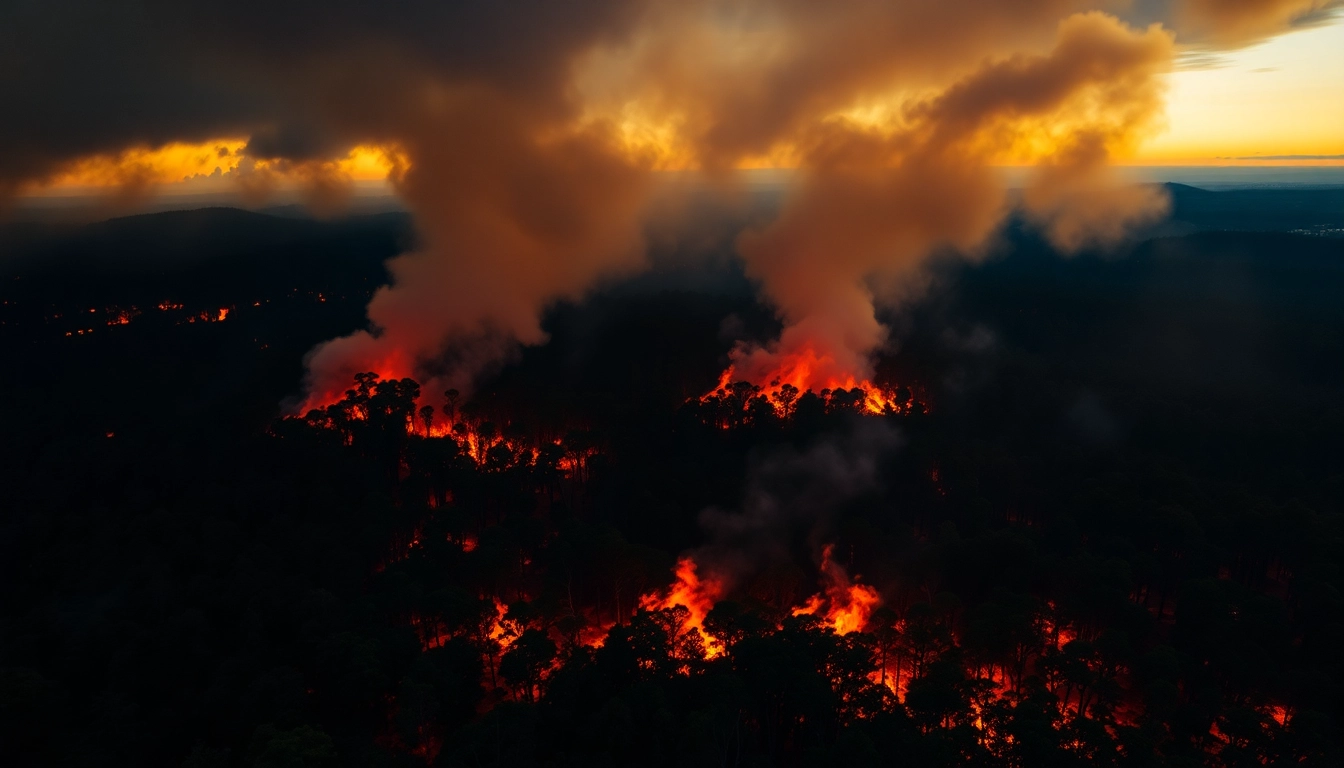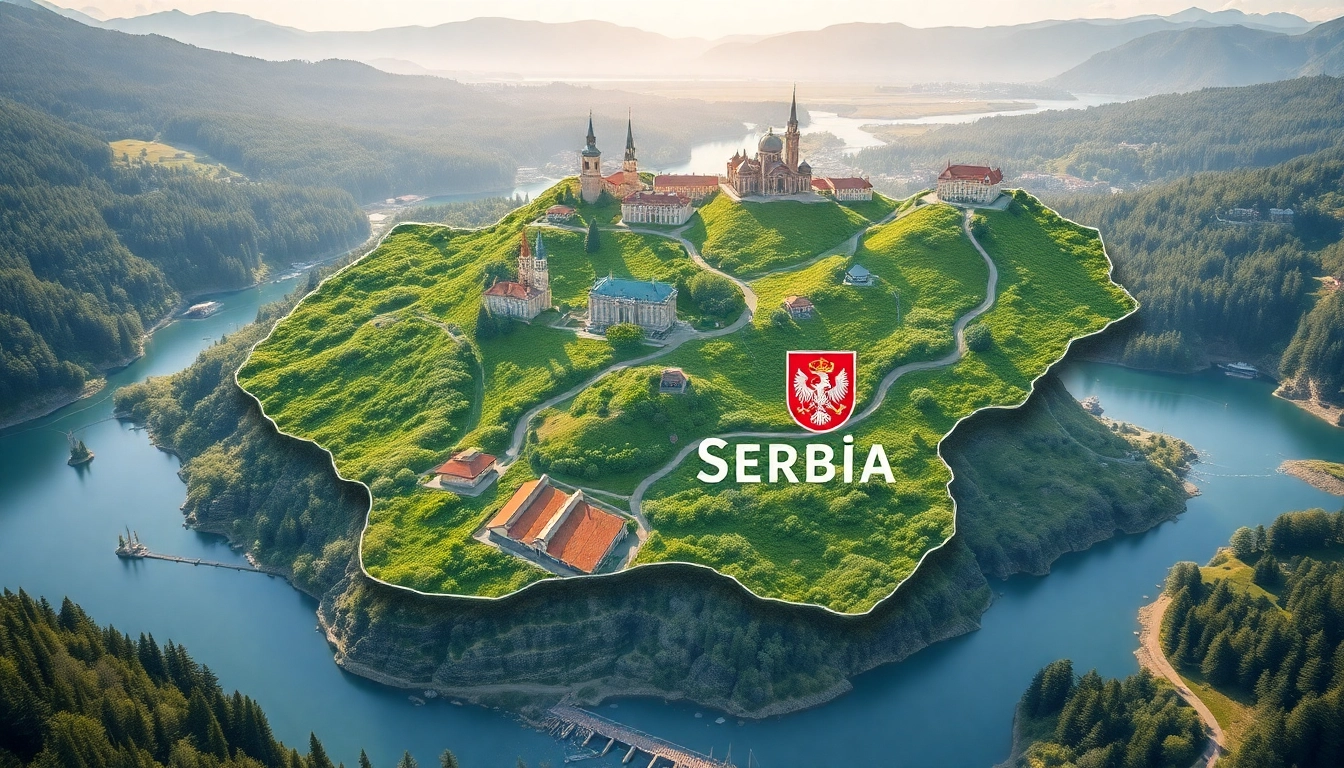The Nature of Wildfire Events
Defining Wildfire Events
Wildfire events are natural occurrences characterized by uncontrolled fires that ignite in forests, grasslands, or other types of vegetation. These fires can spread rapidly, fueled by environmental conditions such as dry weather, high winds, and the availability of combustible materials. According to the wildfire events framework, understanding these occurrences is vital not just for environmental analysis, but also for public safety and resource management.
Types of Wildfire Events
Wildfires can be categorized into several distinct types based on their behavior and the landscapes they affect:
- Surface Fires: These fires burn along the forest floor, consuming grass, leaves, and small vegetation while allowing larger trees to survive.
- Ground Fires: These occur below the surface, affecting the organic matter in the soil and can smolder for long periods of time.
- Crown Fires: Also known as canopy fires, these fires spread through the tops of trees and can be difficult to control due to their rapid flame spread.
- Mixed Fires: These involve a combination of surface and crown fires and represent a serious threat due to their unpredictable behavior.
Causes and Conditions
Wildfires can be ignited by various natural and human-induced factors. Common natural causes include lightning strikes, which can spark fires in remote areas, while human activities such as campfires, discarded cigarettes, and arson are significant contributors as well. Additionally, certain environmental conditions such as drought, high winds, and low humidity create an optimal environment for wildfires to ignite and spread.
The conditions have been increasingly exacerbated by climate change, leading to longer fire seasons and more intense events, underscoring the need for proactive management strategies.
Impacts of Wildfire Events
Environmental Consequences
The environmental impacts of wildfires are profound, influencing air quality, soil health, and biodiversity. When vegetation burns, it releases carbon dioxide and particulate matter into the atmosphere, contributing to air pollution. This can lead to respiratory issues in humans and animals. Furthermore, wildfires disrupt local ecosystems; they can destroy habitats, leading to the loss of wildlife populations and biodiversity. Soil erosion is another significant consequence, as the loss of vegetation can lead to decreased soil integrity and increased susceptibility to future soil degradation.
Human and Economic Effects
Wildfire events can have devastating effects on communities, causing property damage and loss of life. Homes and infrastructures, such as power lines and water systems, often fall victim to these fires. The economic impact is also substantial, with costs associated with firefighting efforts, recovery, and rebuilding often reaching billions of dollars. In areas reliant on tourism and outdoor activities, wildfires can deter visitors, further impacting local economies.
Wildfire Events and Climate Change
Climate change plays a critical role in the frequency and intensity of wildfire events. Rising global temperatures lead to drier conditions, enhancing the likelihood and severity of wildfires. Projections indicate that if current trends continue, wildfire seasons will lengthen, resulting in increased occurrences across numerous regions worldwide. This necessitates a coordinated response to address these changes and adapt to emerging fire risks, including incorporating sustainable land management practices and enhancing community preparedness.
Safety Protocols During Wildfire Events
Pre-event Preparedness
Preparing for potential wildfire events is crucial for reducing risk and ensuring safety. This includes creating defensible spaces around homes by clearing away debris, maintaining a well-watered landscape, and having an emergency kit ready with essential supplies. Community education regarding fire prevention tips and safety protocols is another vital aspect of preparedness, fostering resilience among local populations.
Evacuation Protocols
During wildfire events, timely evacuation can be paramount. Local authorities often provide alerts through various forms of media, but individuals must also be aware of the evacuation routes and an emergency plan for themselves and their families. Establishing a communication plan ensures everyone knows how to stay connected during a crisis and agree on a meeting place after evacuating.
Post-event Recovery Plans
Recovery from a wildfire can be a lengthy and challenging process. Communities often require significant support to rebuild homes and infrastructures, as well as restore the local economy. Establishing disaster recovery plans that include temporary housing solutions, financial aid, and psychological support for affected individuals is essential. Moreover, conducting post-wildfire assessments can help communities learn from experiences and implement more effective future preparedness strategies.
Wildfire Events and Community Engagement
Raising Awareness and Education
Awareness and educational initiatives can play a key role in preventing wildfires. Engaging with communities to provide information on the causes of wildfires, the importance of fire safety, and best practices for fire prevention helps foster a culture of preparedness. Programs can include community workshops, school curriculums focusing on environmental education, and partnerships with local organizations to facilitate training sessions.
Volunteer Opportunities and Support
Communities benefit greatly from volunteer programs aimed at wildfire preparedness and response. Local organizations, schools, and businesses can unite to create volunteer networks that provide support during wildfire seasons. These programs may include community clean-up days, firebreak construction, and training for local emergency responders. Encouraging volunteerism elevates community cohesion and enhances collective resilience.
Community Resources and Partnerships
Building strong partnerships among community organizations, government agencies, and fire service professionals enhances the effectiveness of wildfire management strategies. Sharing resources, conducting joint training exercises, and committing to collaborative communication channels ensure communities are better equipped to handle wildfire situations. Access to up-to-date information and resources can also facilitate timely responses during crises.
Future Trends and Research in Wildfire Events
Innovations in Wildfire Management
As the challenges related to wildfires evolve, innovations in wildfire management will become increasingly crucial. Technological advancements such as real-time data analytics, GPS tracking for fire movement, and drone monitoring will enhance firefighting capabilities. Moreover, research into ecological approaches, such as prescribed burns and other forest management techniques, may offer sustainable methods for preventing wildfire spread and mitigating its impacts.
Case Studies of Recent Wildfire Events
Learning from past wildfires can provide valuable insights into improving response efforts and readiness. Recent catastrophic wildfires, such as those in California and the Australian bushfires, revealed gaps in coordination and communication. By analyzing these incidents, experts can develop best practice guidelines to optimize future preparedness and response strategies.
Policy and Legislative Responses
Legislation regarding wildfire management and environmental protection is critical for addressing the rising incidence of wildfires. Policymakers must advocate for increased funding for fire management resources, promote land-use planning that minimizes fire risk, and encourage sustainable practices that reduce the frequency and severity of wildfire events. Collaborative efforts among stakeholders are essential to create comprehensive wildfire policies that protect both people and the environment.



